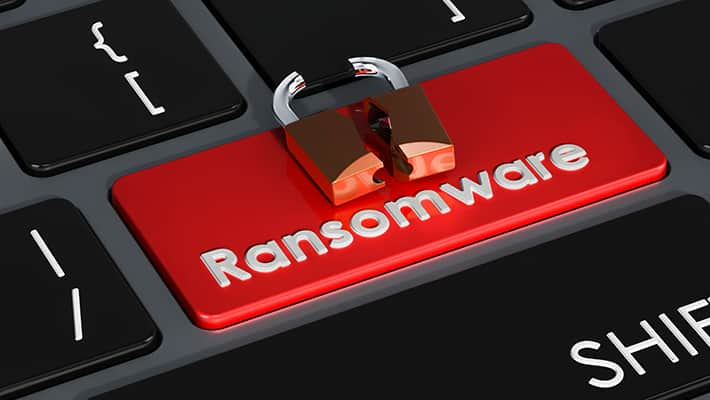Iran-Based Cyber Actors Collaborating with Ransomware Groups: A Growing Threat to Global Cybersecurity

Recent intelligence from U.S. federal agencies, including the FBI, Cybersecurity and Infrastructure Security Agency (CISA), and the Department of Defense Cyber Crime Center (DC3), has shed light on a sophisticated campaign conducted by Iran-based cyber actors targeting organizations globally. These actors, primarily motivated by espionage, are also increasingly working with ransomware groups to monetize their network intrusions. This dual-pronged approach amplifies the threat they pose, not just in terms of data theft but also financial extortion.
Understanding the Threat Landscape
The Iran-based cyber actors, while maintaining an association with the Government of Iran (GOI), appear to operate semi-independently, particularly in their ransomware activities. They have been known to exploit vulnerabilities in widely used network infrastructure, including Citrix Netscaler, F5 BIG-IP devices, and Palo Alto Networks’ PAN-OS. By focusing on these high-value targets, the attackers aim to gain initial access to organizational networks, laying the groundwork for both data theft and subsequent ransomware deployment.
Their techniques are meticulously planned and executed. The actors use a combination of sophisticated scanning tools, like the Shodan search engine, to identify vulnerable network devices. Once a vulnerability is discovered, such as the CVE-2019-19781 in Citrix Netscaler or the CVE-2022-1388 in F5 BIG-IP, they exploit these weaknesses to breach organizational defenses. Following this, the attackers often install webshells and other malware to maintain persistence and escalate privileges within the network.
Collaboration with Ransomware Groups
While the primary goal of these Iranian actors has traditionally been intelligence gathering, there is a concerning trend of these actors collaborating with known ransomware groups such as NoEscape, Ransomhouse, and ALPHV (commonly known as BlackCat). These collaborations typically involve providing access to compromised networks to these groups in exchange for a share of the ransom payments. This partnership allows ransomware affiliates to lock victim networks, exfiltrate sensitive data, and coerce victims into paying substantial ransoms to regain access to their data.
For instance, after exploiting a vulnerability in a targeted network, the Iranian actors may leverage their access to deploy ransomware or hand over access to an affiliate group. This not only increases the monetization potential of their cyber operations but also complicates attribution and incident response efforts for victim organizations.
Exploited Vulnerabilities: A Closer Look
One of the most critical aspects of these attacks is the exploitation of known vulnerabilities. The attackers have shown a clear preference for exploiting remote code execution (RCE) vulnerabilities in internet-facing devices. This includes:
- Citrix Netscaler (CVE-2019-19781 and CVE-2023-3519): These vulnerabilities allow attackers to deploy malicious webshells, enabling them to capture login credentials and establish persistence.
- F5 BIG-IP (CVE-2022-1388): This vulnerability allows remote attackers to bypass authentication, execute arbitrary code, and escalate privileges within a network.
- Palo Alto Networks PAN-OS (CVE-2024-3400): Recent reports indicate mass scanning and probing for devices vulnerable to this CVE, suggesting ongoing reconnaissance and potential exploitation efforts.
By targeting these critical infrastructure components, the actors can compromise entire networks, making it challenging for security teams to contain and remediate the breaches effectively.
Mitigation Strategies for Organizations
Given the sophisticated nature of these attacks, organizations need to adopt a proactive and multi-layered defense strategy:
- Patch Management: Ensure all systems, especially internet-facing devices like Citrix Netscaler, F5 BIG-IP, and Palo Alto Networks PAN-OS, are up-to-date with the latest security patches.
- Network Segmentation: Limit the lateral movement within networks by implementing robust network segmentation. This can prevent attackers from moving freely within the network once they gain initial access.
- Multi-Factor Authentication (MFA): Implement MFA for all remote access solutions and critical systems. This adds an extra layer of security, making it more challenging for attackers to use stolen credentials.
- Continuous Monitoring and Incident Response: Utilize advanced threat detection tools and regularly monitor for indicators of compromise (IOCs) associated with these threat actors. Have an incident response plan in place that is regularly tested and updated.
- Security Awareness Training: Regularly train employees on recognizing phishing attempts and the importance of cybersecurity hygiene. Many breaches start with phishing or social engineering attacks that target unaware users.
Conclusion
The evolving tactics of Iran-based cyber actors, combined with their collaboration with ransomware groups, underscore the importance of robust cybersecurity practices. Organizations, especially those in sectors such as defense, healthcare, and critical infrastructure, must remain vigilant and continuously enhance their defenses. By understanding the methods used by these actors and adopting a proactive approach to cybersecurity, organizations can better protect themselves against these growing threats.
Staying informed and up-to-date on the latest threat intelligence is crucial for staying ahead of cyber adversaries. As this case illustrates, the landscape of cyber threats is becoming more complex and intertwined, making it imperative for organizations to maintain a high level of readiness and resilience.